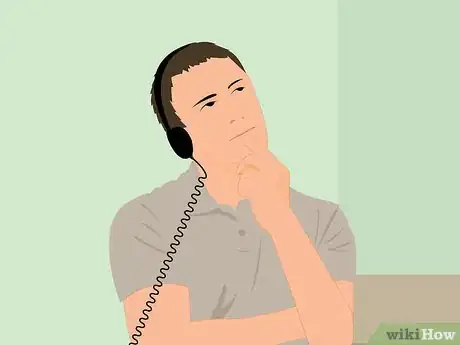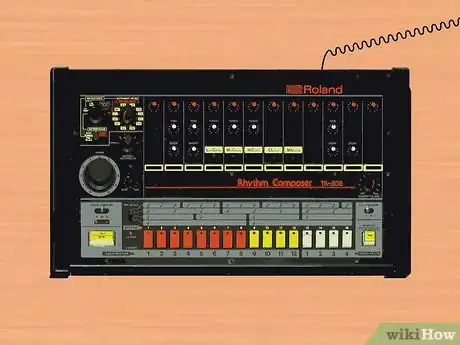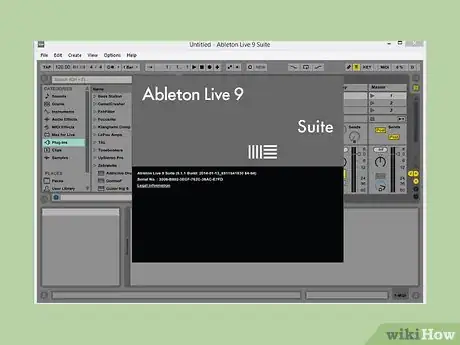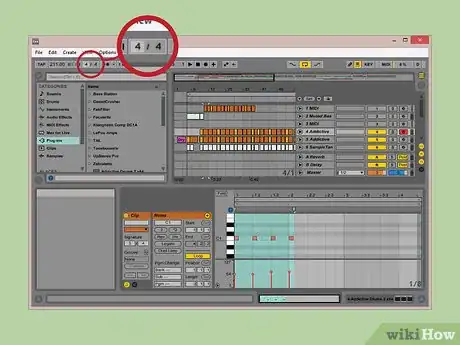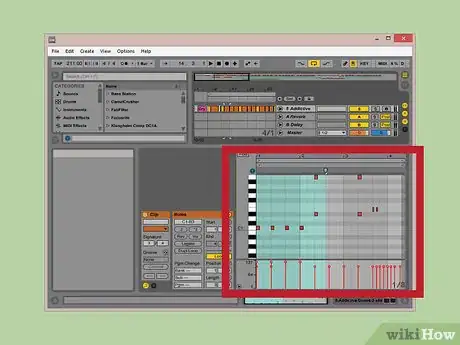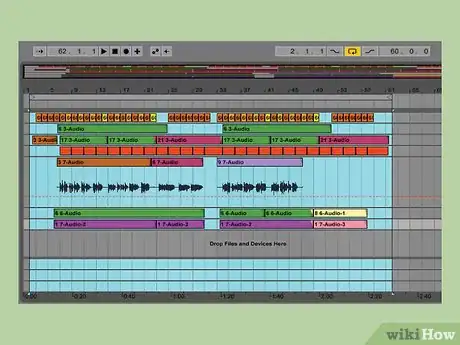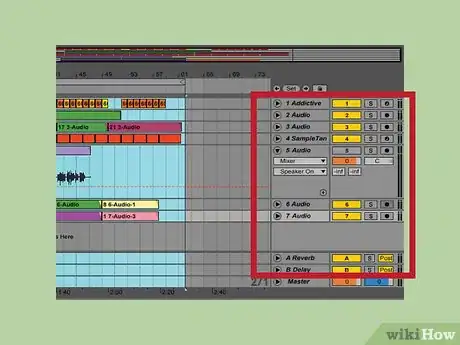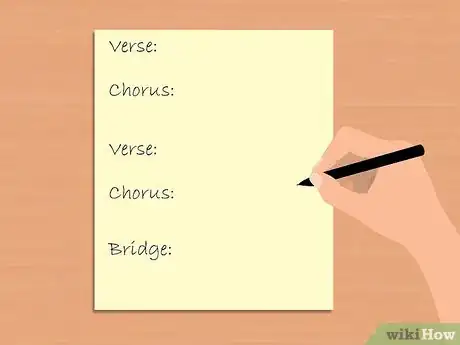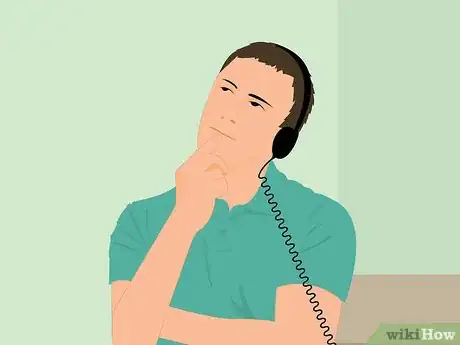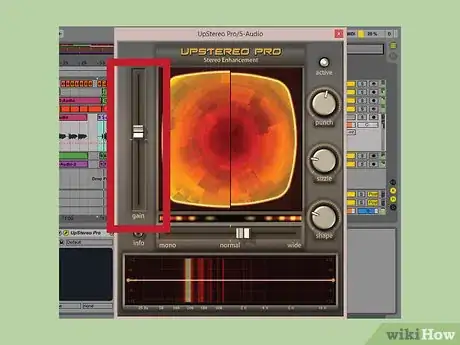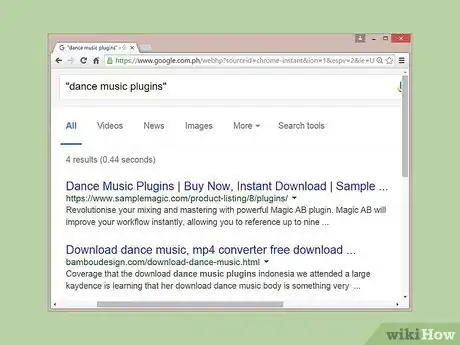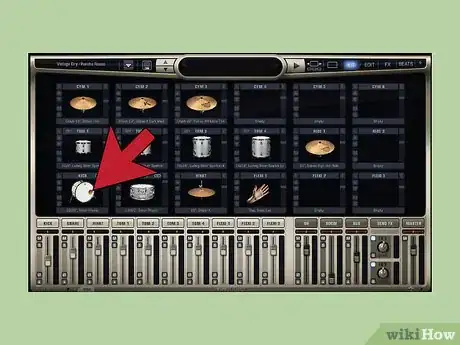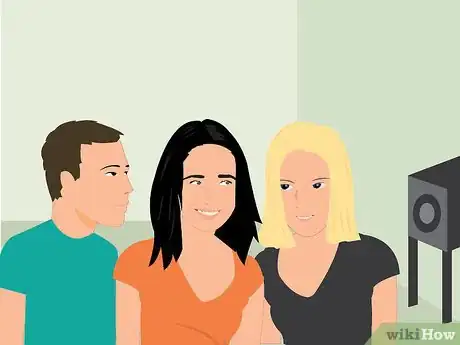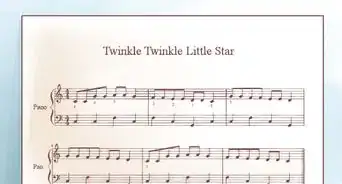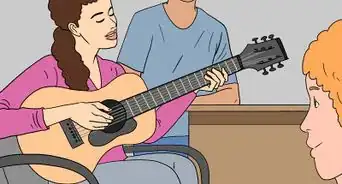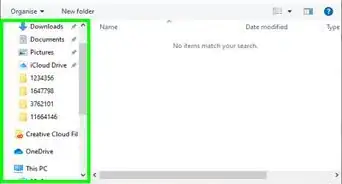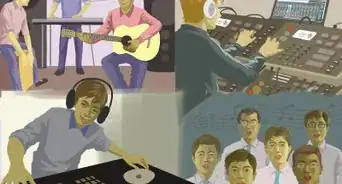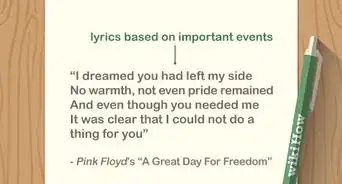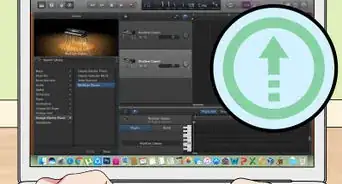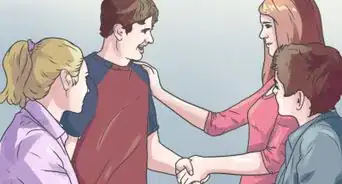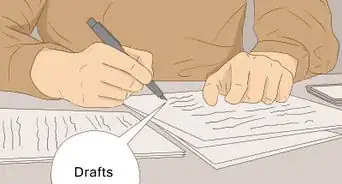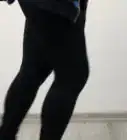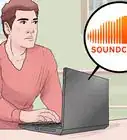This article was co-authored by Timothy Linetsky. Timothy Linetsky is a DJ, producer, and music educator that has been making music for over 15 years. He is a certified Ableton trainer and creates educational YouTube videos focused on producing electronic music. He has over 90,000 YouTube subscribers.
This article has been viewed 39,430 times.
One of the great things about the advance of technology is the ability to make electronic music. You no longer need to master an instrument to make some pretty cool tunes. Dance music is one of the biggest genres that has come out of electronic music. Like any other form of art, there is a process you should follow. However, most of it comes down to creativity!
Steps
Deciding What to Make
-
1Decide what type of dance/electronic music you would prefer. Listen to a large variety of music until you find the sound or style that speaks to you. The most popular types of dance music currently are commercial Dance, Trance, House, Drum and Bass, Garage, Hip Hop, and UK/Happy Hardcore, although there are many more. There are also other totally different types of sub-genres to dance.
- Consider the purpose of your dance music. Is it for a specific event, a class, or just for fun? Take this into consideration. For example, if you're making some dance music for a party you're having in a few weeks you'll want the music to be more upbeat.
- Don't limit yourself by genres and pop charts. Look for new artists and experiment!
-
2Start to learn classic electronic music sounds. There are some classic, legendary electronic music sounds that make their way into most songs. The TR-808, TR-909, TR-606, and LinnDrum are all sounds that are worth becoming very comfortable with. [1]
- It’s not so different from familiarizing yourself with the basics chords if you were trying to learn guitar. Once you begin to understand the textures to these sounds the rest of your music making experience will be a lot easier.[2]
Advertisement -
3Search for inspiration. If you want to make dance music you probably already have listened to a good deal of it. Start by emulating the music that you like. Some recommend taking someone else’s track to get started.
- By no means should you ever copy someone’s work and claim it as your own. However, if you’re just trying to learn and build confidence it is very helpful to take the framework of a song that you enjoy and make alterations. [3]
Creating the Song
-
1Download a digital audio works program (DAW). If you’re just getting started you can play around with something like Garage Band, but as you get serious you’ll want to invest in a program that has a vast library of high quality recorded sounds.
- You also want a program that will make your life easier as you proceed with your arrangement. Ableton Live and Bitwig are two popular options.
-
2Start with your beat. The beat powers the song and controls how danceable the music is. To form a good beat, try to pick out just the drums from a piece of dance music. Dance music is almost always in 4/4 time, but there are exceptions, such as "Galvanize" by The Chemical Brothers in which they throw in a 2/4 bar every few instrumental measures.
- High hat sounds good with straight eighth notes or sixteenths. You can use snare drum to accent and syncopate the beat. Hip-hop uses the clap, so you may want to try to use electronic snare instead.[4]
-
3Consider cooking your own drum beat. Rather than choosing just one prerecorded drum sound, try laying two different ones over each other. This will create a new and unique sound that you can add to your music. The sounds blend together so if you really like the attack of one beat but prefer the body of a different beat you can combine the two.[5]
- The attack is the very beginning of a drum beat.
-
4Devise a bassline. Dance music usually starts with the catchy bassline and elaborates based on repetition.[6] The bassline can also be the rhythm of a chord progression that you make. The bassline does not necessarily need to have a bass playing it, but you should choose an instrument that has a lower tone. These lower tones sound good when they are establishing the rhythm.
-
5Choose sounds that gel.[7] It’s important that choose sounds that go well together. Trust your ear – there’s no exact way to do this. Understanding the sounds that work well together is an art. Don’t throw sounds together that immediately sound dissonant and expect them to sound better later on down the road. If it doesn’t work, ditch it.
- Choosing the right sounds at the beginning is much more important than tweaking levels later on. Pick something that gels right away. Otherwise you may end up rebuilding your track from the ground up later.[8]
-
6Visualize your structure. Most dance music has a typical structure. This structure is Intro, Verse, Chorus, Breakdown, Verse, Chorus, Bridge, Chorus, and then Outro. The Breakdown generally ditches percussion as you transfer from the first chorus to the second verse and the Bridge is another transitional section popular in pop music.[9]
- Consider the arc you want your song to have. Do you want an interlude, a big drop, or a build up? Try charting our how you want your song to sound on a piece of paper before you start building it.
-
7Begin layering. Generally the farther you progress in the song the more action there should be. Usually some layers are rhythms on the chord progression, others are the same note or riff played over and over despite the progression.
-
8Add lyrics if you choose to. You may want to rap or make two lines that rhyme and sound cool to repeat in certain parts of the song.[10] Alternatively, you could go for a rock format with a verse and a chorus. You can even take out your favorite poem or nursery rhyme and read or sing it! It's up to you.
- Some sort of rhythmic phrase can add a whole new component to your dance music.
Refining Your Dance Music
-
1Listen to how the music sounds. If something doesn't sound right then it is up to you to figure out why it doesn't sound right.[11] All music is based upon experimentation and the same theory used over 400 years ago. The reason to study theory is to learn about what musicians of the past discovered by themselves.
-
2Pay close attention to levels. It’s important that you attend to each specific sound. You don’t want your music to end up sounding like one big wall of noise. Sometimes light rebalancing is enough to completely change the sound of your song. Understand that each individual element is very important to the overall structure.[12]
-
3Pull from many different sound sources. Don’t only take the prerecorded sounds from the program that you are using. You should always be on the search for new sounds to spice up your music.[13] Use the internet to find websites that offer sounds – there are tons of them out there, and you can even find a few that offer the sounds for free if you look hard enough.
- You can also pull from the sounds on other programs. If you stick with the sounds on your program for too long your music will become stagnant and repetitive.
-
4Search for new sounds. It’s important that you continue to search for new sounds. The more creative your sounds are, the less stale your music will feel. You want something that people can dance too, but you also want to stand out from the crowd.[14]
-
5Make alterations and consider your kick drum. You can take out the drums and bass to leave a string riff or you can have a beat play alone. You can even change styles completely. However, many think the most important thing to pay attention to is the kick drum.[15] If you feel like your music isn’t gelling or just hasn’t come together yet, the kick might be the problem. This is the heart of your song. If your mix isn’t coming together, change the kick drum sound or rhythm.
-
6Try it out! Get some friends together, have some drinks, and check out the danceability of your new track. Your friends will probably be excited to hear your new music and you'll get to see which parts of the song people seem most into. This is a great way to have some fun and hear a few critiques at the same time.
References
- ↑ http://blog.discmakers.com/2015/04/twelve-tips-for-producing-electronic-dance-music/
- ↑ http://blog.discmakers.com/2015/04/twelve-tips-for-producing-electronic-dance-music/
- ↑ http://blog.discmakers.com/2015/04/twelve-tips-for-producing-electronic-dance-music/
- ↑ http://www.mixedinkey.com/Book/Visualize-the-Structure-of-Dance-Music
- ↑ http://blog.discmakers.com/2015/04/twelve-tips-for-producing-electronic-dance-music/
- ↑ http://blog.discmakers.com/2015/04/twelve-tips-for-producing-electronic-dance-music/
- ↑ http://www.theguardian.com/music/musicblog/2008/aug/14/lastweekihadan
- ↑ http://blog.discmakers.com/2015/04/twelve-tips-for-producing-electronic-dance-music/
- ↑ http://www.mixedinkey.com/Book/Visualize-the-Structure-of-Dance-Music
- ↑ http://www.theguardian.com/music/musicblog/2008/aug/14/lastweekihadan
- ↑ http://www.theguardian.com/music/musicblog/2008/aug/14/lastweekihadan
- ↑ http://blog.discmakers.com/2015/04/twelve-tips-for-producing-electronic-dance-music/
- ↑ http://blog.discmakers.com/2015/04/twelve-tips-for-producing-electronic-dance-music/
- ↑ http://www.theguardian.com/music/musicblog/2008/aug/14/lastweekihadan
- ↑ http://blog.discmakers.com/2015/04/twelve-tips-for-producing-electronic-dance-music/
